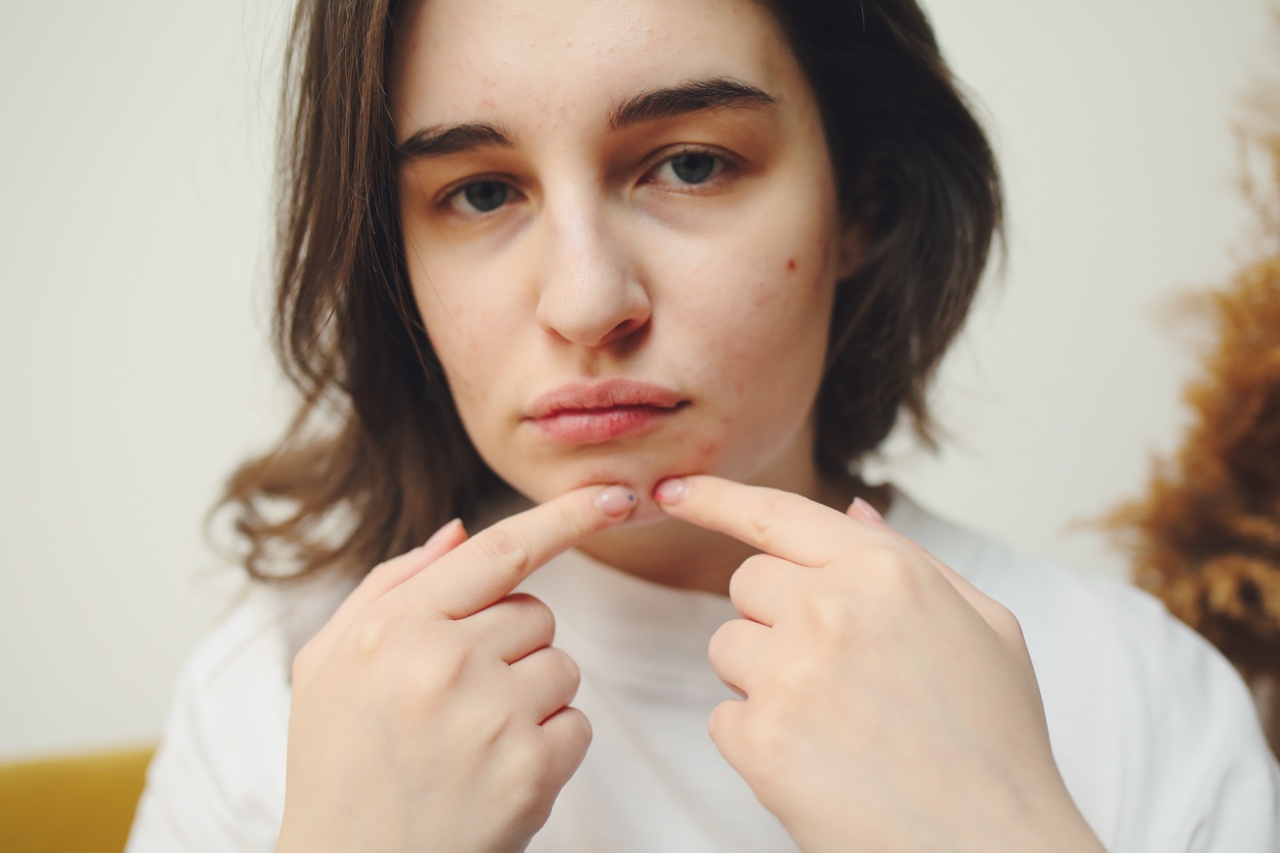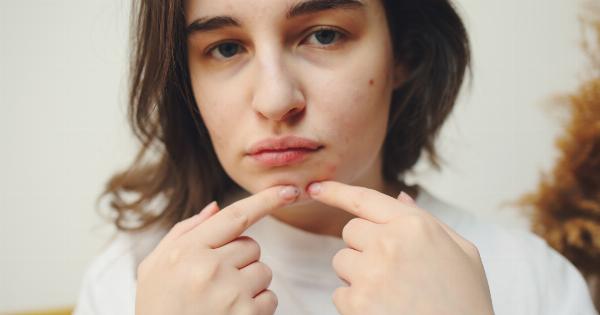Pimples are a frustrating and often embarrassing skin condition that many people deal with at some point in their lives. The desire to get rid of these unsightly blemishes can sometimes lead to impulsive actions, such as popping pimples.
While popping pimples may seem like a quick fix, it can have serious consequences, especially when performed in the “danger triangle” of the face.
What is the “Danger Triangle”?
The “danger triangle” is an area on the face that includes the region from the corners of the mouth to the bridge of the nose.
This triangular region is known as the danger triangle because it contains important blood vessels that connect directly to the cavernous sinus in the brain. Popping pimples in this area can introduce bacteria from the skin into the bloodstream, potentially leading to severe infections, such as cellulitis, an abscess, or even meningitis.
The Potential Consequences
Popping pimples anywhere on the face can lead to inflammation and scarring, but doing so in the danger triangle increases the risk of serious complications. Here are some of the potential consequences:.
1. Cellulitis
Cellulitis is a bacterial skin infection that can occur when bacteria enter the skin through a wound or break in the skin barrier, such as a popped pimple.
In the danger triangle, the blood vessels are connected to the cavernous sinus, making it easier for the bacteria to enter the bloodstream and spread. Cellulitis can result in redness, swelling, warmth, and pain in the affected area. If left untreated, it can lead to more severe infections and complications.
2. Abscess
Popping pimples in the danger triangle can also lead to the formation of an abscess. An abscess is a pocket of pus that forms as a result of a localized infection.
When bacteria from a popped pimple enter the bloodstream and reach the danger triangle, they can cause an infection deep beneath the skin. The body’s immune response tries to fight off the infection by sending white blood cells to the area, resulting in the accumulation of pus.
Abscesses can be painful, swollen, and may require medical intervention, such as drainage or antibiotics, for proper healing.
3. Meningitis
Meningitis is a serious and potentially life-threatening infection that results in the inflammation of the protective membranes covering the brain and spinal cord.
While the risk of developing meningitis from popping pimples in the danger triangle is relatively low, it is a possible complication. If bacteria from a popped pimple reach the bloodstream and travel to the central nervous system, they can cause meningitis. Symptoms of meningitis include severe headache, high fever, neck stiffness, and sensitivity to light.
Immediate medical attention is necessary if meningitis is suspected.
4. Vision Problems
The proximity of the danger triangle to the eyes also poses a risk of vision problems.
If an infection spreads and affects the eye or the surrounding structures, it can lead to conditions such as conjunctivitis (pink eye), orbital cellulitis, or even permanent vision loss. The spread of infection to the eye can cause redness, swelling, pain, and impaired vision. Prompt treatment is crucial to prevent further complications.
5. Scarring
In addition to the potential for serious infections and complications, popping pimples in the danger triangle can also result in significant scarring.
Picking at or squeezing pimples can damage the surrounding skin, leading to post-inflammatory hyperpigmentation (PIH) or hypertrophic scars. These scars can be difficult to treat and may require professional dermatological interventions, such as laser therapy or chemical peels, to improve their appearance.
Preventing the Temptation
Understanding the potential consequences of popping pimples in the danger triangle can help discourage individuals from engaging in this risky behavior. Here are some tips for preventing the temptation:.
1. Keep the Skin Clean
Maintaining a proper skincare routine can help prevent the formation of pimples and reduce the urge to pop existing ones. Cleanse the face twice a day with a gentle cleanser and follow up with a suitable moisturizer.
2. Avoid Touching the Face
Avoid touching the face unnecessarily, as this can transfer dirt, bacteria, and oils to the skin, leading to clogged pores and breakouts. Additionally, touching the face can increase the risk of introducing bacteria into the danger triangle.
3. Use Acne Treatments
If acne is a persistent issue, consider using over-the-counter or prescription acne treatments.
These products contain ingredients that can help clear the skin and reduce the occurrence of pimples, making it less likely for individuals to feel the need to pop them.
4. Seek Professional Help
If acne is severe or persistent, it is best to seek professional help from a dermatologist. Dermatologists can provide targeted treatments, such as topical or oral medications, to control acne and prevent future breakouts.
5. Practice Stress Management
Stress can contribute to the development of acne and increase the temptation to pop pimples. Engaging in stress management techniques, such as exercise, meditation, or relaxation exercises, can help reduce stress levels and improve overall skin health.
Conclusion
Popping pimples in the danger triangle can have severe consequences, including serious infections, scarring, and even potentially life-threatening conditions like meningitis.
It is crucial to resist the temptation and find alternative ways to manage and treat acne. By maintaining a proper skincare routine, avoiding unnecessary touching of the face, and seeking professional help when needed, individuals can effectively prevent the need to pop pimples and protect their overall skin health.



























